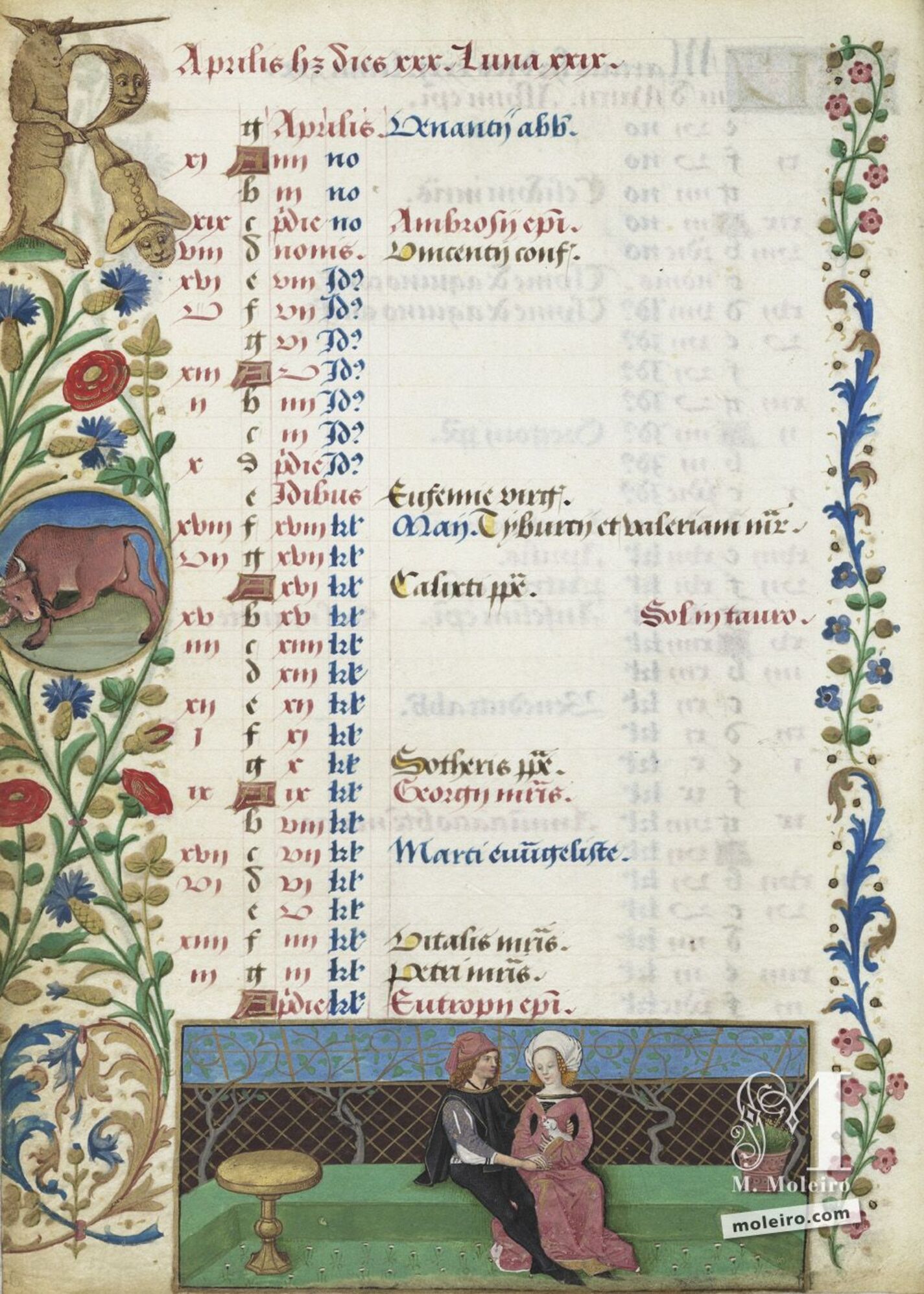The month of April. A loving couple in an enclosed garden
The themes for illustrating the month of April in the calendars of fifteenth-century books of hours, were often inspired by the world of courtly love. April did in fact mark the beginning of spring and was associated with love, so it was not unusual for it to be depicted by a loving couple strolling through a garden, weaving a crown of flowers or exchanging rings. In that period, the enclosed garden became the special place for the expression of love by the aristocracy, thereby secularising such gardens – which had previously symbolised Our Lady’s purity – for their own benefit. In addition, April is associated with the sign of the Zodiac, Taurus, the equivalent of Venus, the planet of love, according to medieval astrology.
Robinet Testard knew that the engraving of a couple sitting on a leafy bench by the Master of the Amsterdam Cabinet which he used as an indirect source was a good model because this master seemed to have specialised in courtly engravings. But the illuminator skilfully adapted the original scene to the rectangular bas-de-page format by extending the space and emphasising the plant surround (arbour, lawn and budding trees) to forge a robust link between the image and the theme to be depicted, i.e. the month of April. Elements retained from the engraving include the posture of the two characters in a tender embrace, their clasped hands, the man’s leg stretched out protectively in front of his partner, and the woman’s shyness, her downcast eyes, and the small dog symbolising faithfulness she holds on her lap.
Séverine Lepape
Conservador
Musée du Louvre
